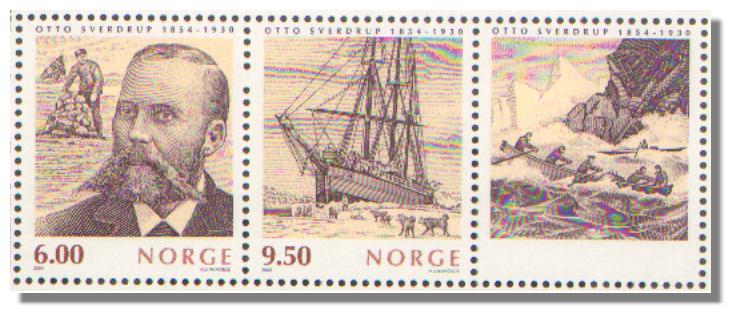|
Otto Sverdrup
Otto Sverdrup (1854-1930) was born and grew up in Bindal in the county of Nordland. He went to sea at the age of seventeen and got his masterís certificate in Christiania in 1875.
He worked for some years as shipmaster, until he went abroad as mate in 1882. In 1884, he showed resourcefulness and courage, when he saved the lives of the captain and the
crew after their ship was wrecked off the coast of Scotland, I was only doing my duty, he said.

He reached a turning point in his life in 1888, when Fridtjof Nansen took him on six-man expedition Greenland on skis. It was a strenuous trip, hut Nansen was so impressed with
Sverdrup that he included him in the planning of his next major project which was to build a ship to explore the ocean round the North Pole. Shipbuilder Cohn Archer was
commissioned to design the Fram.
Captained by Otto Sverdrup, the 'Framí started on its journey north in June 1893. The voyage over the Arctic Ocean did not go as planned and Fridtjof Nansen and Hjalmar
Johansen left the ship in March 1895 to try and reach the North Pole on skis.
It took the ĎFramí nearly 17 months to get back to Norway. It is clear from Sverdrupís diary that his patience was sorely tried at times. There was continual friction and open
conflict among the participants. For the first few months, the ship was locked in the ice, but Sverdrup managed to blast it loose and regain the open sea. They reached Skjervoy
in Tromso on 20 August 1896, and the following day they met up again with Nansen in Tromso. Nansen and Johansen had arrived in Varde seven days earlier.
In 1898, the Fram set off again on a new voyage. With Otto Sverdrup as captain and expedition leader, they planned to sail northwards along the coast of Greenland and from
there organize dogsled expeditions to the northern point and east coast of Greenland. Sixteen men departed, but only fourteen returned home alive.
During the four-year expedition, many discoveries were made of new land areas in Greenland and Canada, adding color to the hitherto white, uncharted areas on the map.
After spending his fourth winter in the ice, Sverdrup managed to get the ship clear in August 1902 and return to Norway.
Later in life, Sverdrup was summoned twice to lead rescue operations to help Russian expeditions in trouble. Shortly before his death he worked to save the Fram, but did not
live to see her finally restored. He died in 1930, aged 76. In 1936, the 'Fram' was brought to the new Fram museum in Oslo.
|
|

